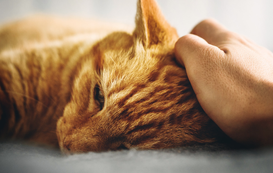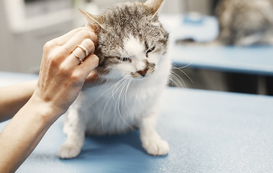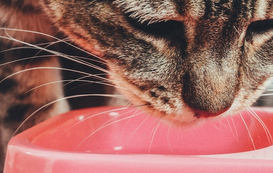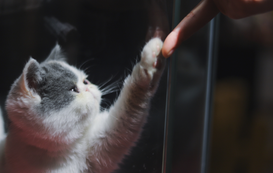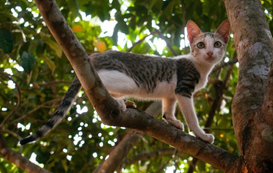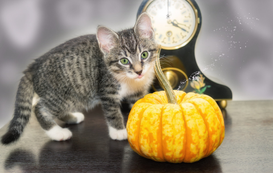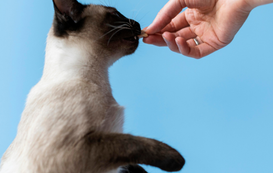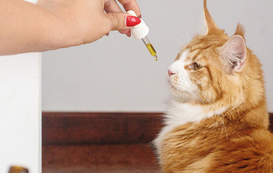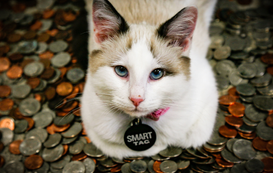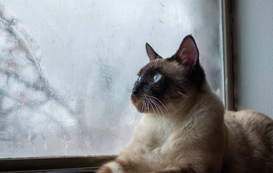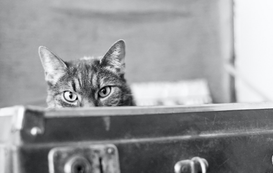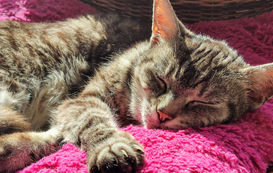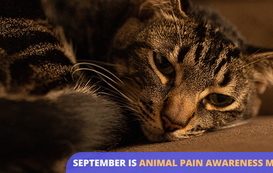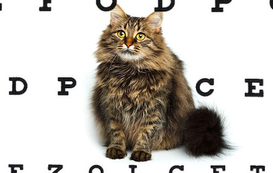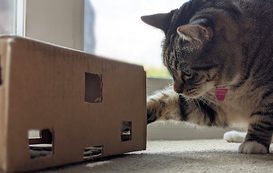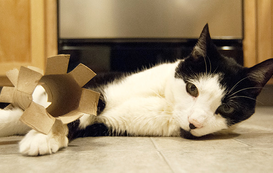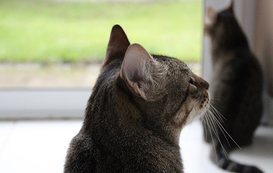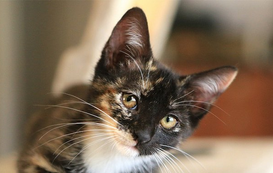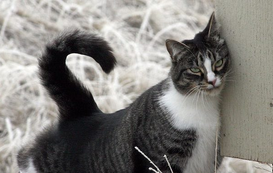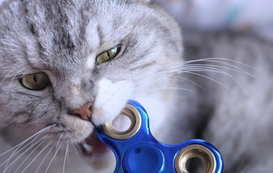- Home
- Cat Sitter Blog
- Cat Health
- April is Prevention of Cruelty to Animals Month
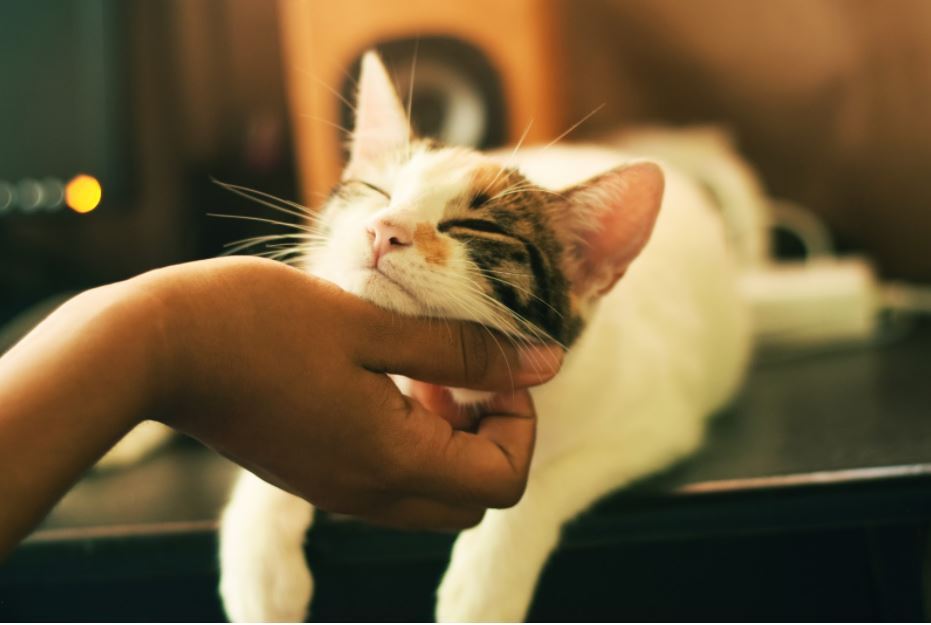

Popular posts
April is Prevention of Cruelty to Animals Month
April is all about spreading awareness and preventing cruelty to animals. The ASPCA is already all about ending the epidemic of animal cruelty across America, but they decided to officially make April Prevention of Cruelty to Animals Month, a month specifically about raising awareness to their core cause.
Animal cruelty is a sad and unfortunate reality in the United States, one that sees a staggering 10 million animals die every year. That means once every 60 seconds, there is an animal being abused somewhere in America.
There are many types of animal cruelty, and it's important to recognize the different warning signs. While most people think immediately of animal abuse and neglect as soon as they think of animal cruelty, the issue many times goes far beyond instances of direct abuse.
The best way to combat animal cruelty is to educate ourselves on what animal cruelty looks like and what warning signs to recognize. Arming ourselves with knowledge and knowing what to look out for could be the difference between life and death for millions of innocent animals.
Animal Abuse and Neglect
Abuse and neglect are some of the most prolific acts of animal cruelty in America. While many times abuse and neglect go hand in hand, they are actually different types of cruelty: active and passive.
Active abuse is typically more violent and includes beating, hitting, kicking, cutting, burning, or maiming the animal. This is very violent and traumatic abuse and oftentimes results in death.
Passive abuse manifests itself in neglect and includes starvation, dehydration, improper shelter, being kept in cages/carriers, unhygienic living conditions, or lack of necessary veterinary attention. While this is a less violent act of abuse, it is still considered animal cruelty and can also result in the death of the animal.
Some signs of abuse and neglect to look out for:
- Obvious or severe injuries
- Lack of grooming
- Skittish or scared behavior
- Overly aggressive behavior
- Low body weight or visible bones
- Mangey or severely matted fur
- Presence of excessive fleas and/or ticks
If you live in an area with neighbors, pay attention to any animals that are routinely kept outside. It is considered abuse to keep animals outside during the extreme heat or cold without proper shelter or protection. If you suspect an animal of being abused or neglected, contact your local animal control right away.
Animal Hoarding
Animal hoarding is another form of animal abuse, and one that has become a fairly prolific problem in America. Millions of people struggle with hoarding disorder, a mental illness that causes them to excessively collect items, objects, and trash. Unfortunately, there are also hoarders that collect animals. It's estimated that 250,000 animals are victims of animal hoarding every year in the United States.
Animal hoarding may start out innocently enough, many times with people having good intentions to save homeless or abandoned animals. Some people start off as rescues or fosters and quickly turn into a situation that is unmanageable.
The disorder begins to spiral out of control when the number of animals becomes too much for the individual to care for. In the most extreme cases, people will hoard hundreds or even thousands of animals. Once the number of animals starts to become out of control, their environment, hygiene, and care will quickly deteriorate. Many animals do not survive extreme hoarding situations.
Some signs and symptoms of animal hoarding include:
- Lack of grooming
- Foul smells on the animal
- Foul smells in or around the home
- Eye diseases
- Oral diseases
- Mangey or matted fur
- Presence of excessive fleas and/or ticks
Because of vigilant animal advocates, many animals are saved from potentially deadly hoarding situations. When these animals are brought to the vet, they are oftentimes riddled with disease, poor hygiene, and are under extreme psychological distress. Many animals require special care and therapy to recover from the trauma they endured by being hoarded. If you suspect someone is an animal hoarder, please contact your local animal control right away.
Animal Testing
Another egregious practice of animal cruelty is animal testing. Although animal testing has been condemned by many animal rights activists and is much less common in the United States now than it used to be, unfortunately, it does still happen.
Many cosmetics, medicine, and cleaning chemical companies continue to test on animals. These tests are scary, painful, and sometimes lethal for millions of innocent animals. It is torture for profit.
Thankfully, there are many resources on the internet that you can find that will tell you which companies still test on animals and which companies are cruelty-free. Most cruelty-free companies are very upfront about the fact that they do not test on animals and will even display that fact on their packaging. When you're shopping for new makeup, haircare, skincare, or cleaning products, make sure you are doing the proper research to ensure that all of the products you are using are cruelty-free. Boycott any brand that continues to test on animals.
Pet Stores and Breeders
Everyone knows the phrase "adopt, don't shop" but are you following this practice? Pet stores and luxury pet breeders are notorious for their cruel and abusive practices concerning animals.
Pet stores generally keep animals in unfit and unhygienic conditions. Many animals are kept in cages that are too small, uncomfortable, and unclean. Additionally, most (if not all) of the animals that are sold in pet stores come from breeders.
Breeders only have one thing in mind: money. Breeders will take female animals and basically "pimp" them out, meaning they will impregnate them continuously to yield litters of babies for them to sell for a profit. The mothers rarely receive the proper care and attention they need, and many young do not survive to adulthood.
Adopting an animal from a shelter versus buying an animal from a breeder will ensure that an animal is saved from cruelty and not paid to be born into it.
Photo by Yerlin Matu via Unsplash








